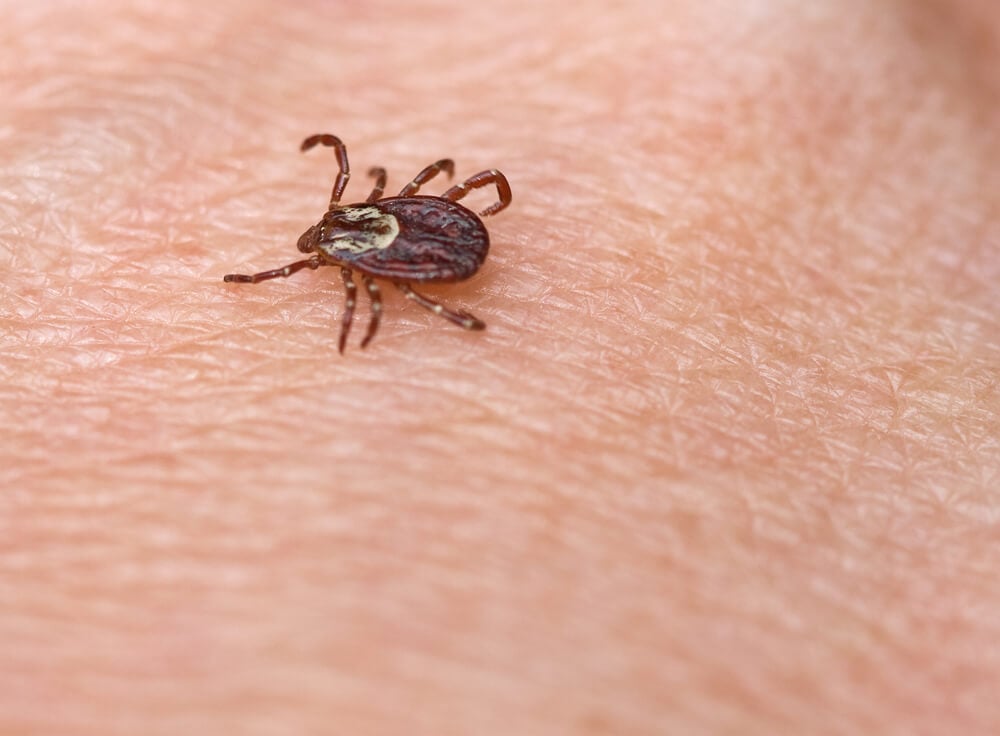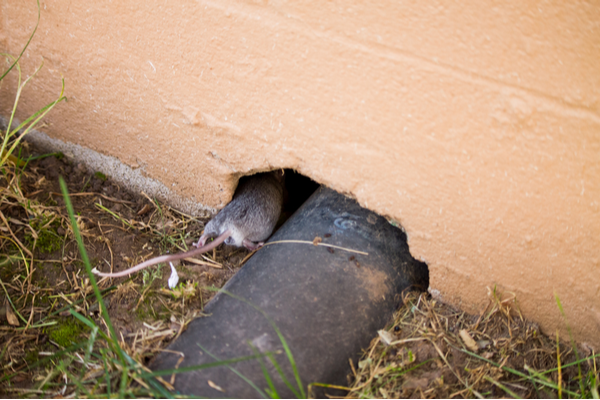When spring gives way to summer, tick season in the Midwest starts anew. These pests have come to inspire dread and paranoia and for good reason. Not only do they latch onto your skin and suck your blood, but they also transmit dangerous diseases. Plus, these arachnids have no qualms about attaching themselves to your four-legged pals.
The tick you’re probably most familiar with is the “wood tick,” which is more visible than its smaller cousin, the deer tick. However, you may not know much about wood ticks or how to protect yourself. To help you navigate the season without the fear of wood tick bites, we’ve created this guide. We cover identification, tick-borne disease, life cycle, and protective strategies. For help reducing the tick population on your property, Plunkett’s is here to help.
1. Wood Tick Identification
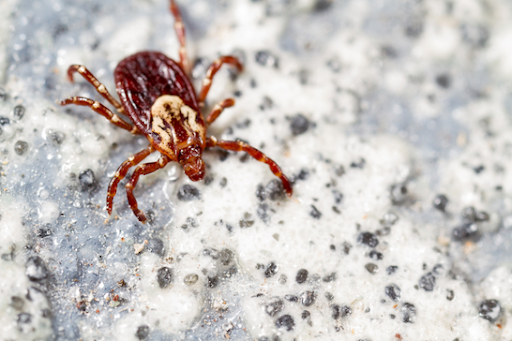
What are wood ticks?
Dermacentor variabilis or wood tick or American dog tick, is a species of tick that is known to carry bacteria responsible for several diseases in humans including Rocky Mountain spotted fever and Tularemia. These diseases spread when the tick sucks blood from the host.
What do wood ticks look like?
Wood ticks have wide, oval-shaped, flat bodies. They are bright reddish-brown in color with gray or silver coloration on their bodies. They grow to about 3/16 of an inch long.

If you notice an engorged wood tick, it’s probably female; they become bloated after feeding. However, males tend to be smaller than females and have silver or white lines on their backs and do not expand after feeding.
How does the tick life cycle affect their behavior?
Wood ticks go through four life cycle phases: egg, larvae, nymph and adult. To pass through each phase, they must have a blood meal. This is why ticks attach to humans and other animals.
After mating in the fall, adult female wood ticks will lay a startling 2,000 to 8,000 eggs. These eggs are usually a translucent red or brown color. Wood tick eggs will hatch the following summer and hungry six-legged tick larvae will emerge to seek their first blood meal. This is where the tiny ticks can first pick up pathogens from infected animals like mice and birds. Larvae continue to develop into the fall where they will find shelter or a host to survive the winter.
The following spring, larvae will molt into eight-legged nymphs. The nymphs will seek out their next meal on a larger host like a deer or human. If a tick became infected as a larva, it can now transmit that disease to a host. After eating, a nymph will transition to a full adult during fall or winter.
Adult wood ticks will eat one more blood meal before mating and laying eggs. Shortly after laying her eggs, a female tick will die. Ticks that don’t mate or lay eggs may go into diapause to survive the winter. The average lifespan of a wood tick is 2-3 years.
Where do wood ticks live?
Wood ticks are widely distributed throughout the Midwest and are most common in Iowa, Minnesota, and Wisconsin. Ticks like humid places with abundant vegetation such as prairies or wooded areas. On the plus side, they don’t generally infest buildings!
Wood ticks are patient feeders who will perch on a blade of grass, shrub, or leaf and wait for their prey to pass by. Fun fact: this is called questing. As the target goes past, the tick crawls on and finds a soft location to attach and eat.
Ticks will gravitate toward places where they can find hosts; pets and livestock may attract wood ticks. It is also possible that wood ticks follow animal odors. Ticks are commonly found perched on grass, shrubs, and other low-to-mid-length vegetation where they can easily jump onto nearby hosts.
2. Wood Tick Bites
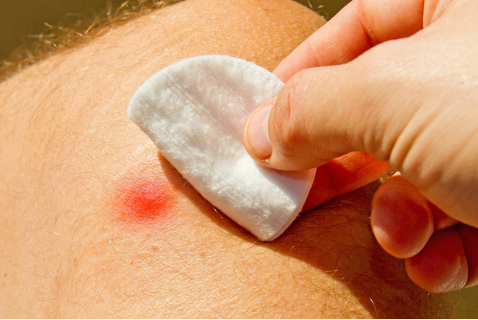
Do wood ticks carry Lyme disease?
No. Scientists do not consider wood ticks a vector for Lyme disease transmission. However, wood ticks are the primary transmitters of Rocky Mountain spotted fever (RMSF). Symptoms of RMSF appear 2-14 days after transmission and include fever, nausea, muscle pain, and a rash around the wrists and ankles.
Wood ticks can also transmit Tularemia. Symptoms include: fever, lethargy, skin ulcers, appetite loss and swollen lymph nodes.
It takes a minimum of 6-8 hours of constant contact for a tick to transmit a disease, so quick identification and removal of an attached tick is crucial. If you experience any severe symptoms after a tick bite, save the removed tick and call your doctor.
How do I identify a wood tick bite?
Tick bites often resemble spider bites. Look for bumps on the skin, especially red dots that are about the size of a dime. You should always check for ticks after spending time outside. They can latch on anywhere but they are partial to moist and warm areas that are lower on the body. Contrary to rumor, ticks do not “burrow" under the skin; you should be able to see attached ticks on the surface of the skin or under hair.
How do I remove a wood tick?
Remove the tick as soon as possible! Use tweezers or forceps to grip the tick’s mouthparts near the attachment site. Pull straight back slowly and carefully to avoid ripping. Tick mouthparts are barbed, so when you remove the tick, you might pull some skin off with it. Once the tick is out, wash and treat the wound with soap and water and apply disinfectant or antiseptic ointment on the site of the bite.
Consider writing down when you removed the tick and preserving it in alcohol. If you develop infection symptoms, you can bring your tick to your doctor for identification.
3. Prevention and Wood Tick Services

How do I prevent wood ticks?
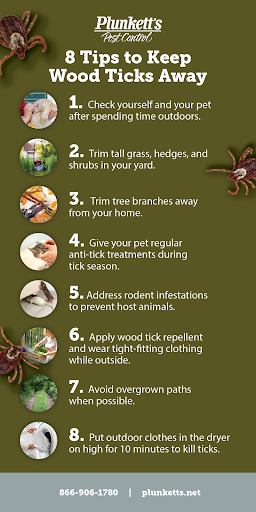
Follow these 8 wood tick prevention tips to help keep them away from you, your family, and your pets:
- Check yourself and your pet after spending time outdoors.
- Tick nymphs can be as small as a pinhead and are easy to miss. You must perform a careful and thorough inspection.
- Trim tall grass, hedges, and shrubs in your yard.
- Trim tree branches away from your home.Give your pet regular anti-tick treatments during tick season.
- Address rodent infestations. Larvae or nymphs often enter property on rodents.
- Apply wood tick repellent and wear tight-fitting clothing while outside.Avoid overgrown paths when possible.
- Put outdoor clothes in the dryer on high for 10 minutes to kill ticks.
How can Plunkett’s help with my tick problem?
If you have a tick issue in your home or on your property, give Plunkett’s a call today. We can treat problem areas to control tick populations and keep your family safe.

